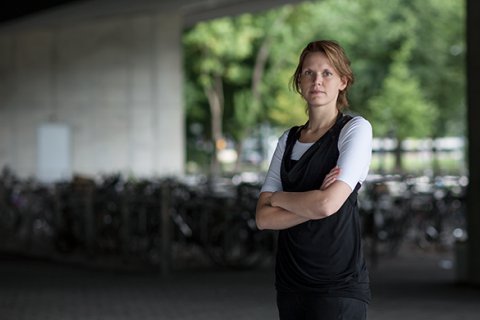Boosting the immune system to tackle bacterial infections
Utrecht Molecular Immunology hub

Antibiotic-resistant bacteria are on the rise and the development of new antibiotics is seriously falling behind. Time to consider other options that tackle the problem from a different angle. Such as Suzan Rooijakkers' approach, in which the body's own defense capabilities are deployed to eradicate infections.
Things can get quickly out of hand
Each year, approximately 25,000 people in Europe die because of a so called multi-drug resistant bacterial infections. The extra costs of care for these patients - who receive very expensive, 'last resort' medication - amounts to €1,5 billion per year. One of the main bacterial culprits is Klebsiella pneumoniae. "Klebsiella has developed resistance to a wide range of antibiotics. Several Klebsiella strains are already resistant against three or more classes of antibiotics, which means that there are hardly any treatment options left. Or unfortunately in some cases, none", says Suzan Rooijakkers, professor of Medical Microbiology at UMC Utrecht and co-coordinator of the Utrecht Molecular Immunology Hub. The cynical twist here is that these patients contract Klebsiella infections while being hospitalised for some other reason. Rooijakkers: "Klebsiella is harmless to healthy people, but when the natural barriers are breached due to medical interventions, things can quickly get out of hand. For example, patients who are on breathing machines or have intravenous catheters are vulnerable to Klebsiella. And as these patients are already in a bad condition, their situation can easily deteriorate."
The key issue is that we still do not completely understand how our immune system actually kills bacteria
Novel approaches
What to do? Developing new antibiotics seems the logical answer, but the serious lack of progress on that front during the last decades does not inspire confidence. Novel approaches are urgently needed. Rooijakkers looks towards the immune system for ideas. "The key issue is that we still do not completely understand how our immune system actually kills bacteria. This is the fundamental question we need to address and for that, we concentrate on the antibodies. Some antibodies are very capable of killing bacteria, whereas others are not. Even though they all recognize the bacteria, so it has to be something else." That something else may be related to the location where the antibodies bind the bacterial cell, and how the antibodies initiate the killing of bacteria by the complement system. Proteins from the complement bind to the antibodies and initiate the formation of pores in the membrane. "Previous research in my group has demonstrated that effective killing of the bacteria requires the pore to pierce both the outer and the inner membrane. Our hypothesis is that the ineffectiveness of certain antibodies is related to the location where they bind the outer membrane. It could be that these locations are not suitable for pore formation, or that the pores fail to reach the inner membrane as well."
We envision that our approach will generate new leads for developing therapeutic antibodies.
Teaming up
One of the first problems to tackle is the identification of those antibodies that manage to destruct both bacterial membranes. "Together with the group of Albert Heck, we will map protein expression levels following an immune responses to identify relevant antibodies." For mechanistic insights into the pore formation process, Rooijakkers will team up with the groups of Friedrich Förster and Piet Gros to benefit from their expertise in structural biology. "Our plan is to take cross sections of the bacteria and study the exact location where pore formation is successful." Rooijakkers envisions that this approach will generate new leads for developing therapeutic antibodies. "That will hopefully boost the effect of existing antibiotics and thus reduce the amount needed, as well the length of therapy. And that is very important to reduce the risk of resistance."

